The Bulletin spent one night with paramedics on the Gold Coast. What we witnessed was extraordinary.
IT’S 1.30am on a Saturday. Most of the Gold Coast is asleep.
Not Stuart Cutajar. He’s driving through rain down Southport Nerang Road.
He’s at the end of a long shift, but you sense he’d happily keep going. “I’m sorry you didn’t get to see more,” he says.
Stuart is a senior paramedic – an operations supervisor with Queensland Ambulance Service.
We’re heading to Southport Ambulance Station. I’m puzzled by what he just said.
I ask him how he rated the night. How busy was it?
For the first time since we met, he seems unsure how to respond.
He pauses, then points to the console in his vehicle that alerts and directs him to Code 1s, the most serious jobs.
“Sometimes it’s all the time, the jobs keep coming, one after another,” he says. “But today, today was a normal sort of day.”
It’s a revealing statement. Because what transpired that night was anything but normal.
* * * * * * * * * * * * * * * * * * *

“It full on just slid out.”
The young girl is speaking fast. She seems unhurt, but in shock. Almost angry at the vehicle that has brought her Friday night to an end, on a lonely patch of Currumbin Creek Rd.
A couple of metres away, beneath a hinterland canopy bathed in red and blue light, are the crumpled remains of a car.
Its windows are smashed. A section of bonnet is shorn away. The roof has caved in, piercing downwards between the two rear passenger seats.
With police yet to arrive, Stuart has taken control of the scene, talking to the young woman and a male friend, who lolls back and forth stealing puffs from a vape.

A second girl is being treated for rib injuries in the back of an ambulance.
But one of the four 19-year-olds who were in the crashed vehicle is nowhere to be seen.
“Where’s the driver,” asks Stuart. “He needs to see us. We need to get him checked. We need to make sure he’s not hurt.”
Eventually he appears from the dark. He admits to having a few drinks. That he was driving fast – 120km/h is mentioned. That he’s a P-plater. That it was wet. That he lost control. That the car rolled three times.
But there is no judgment from the ambulance officers. They don’t worry about how these 19-year-olds got here. Only how they can make sure they’re OK.
All four are taken to hospital – although three seem physically fine.
“We just have to be sure,” says Stuart. “There could be something internal we can’t see. You just don’t want to take any chances.”
A police officer rides in the ambulance carrying the driver. He blew 0.06 at the scene and will likely face charges.
But he’s lucky. They all are. It was a violent, high-speed crash.
Stuart has been to scenes like this before. “It could so easily have been a double fatal.”
* * * * * * * * * * * * * * * * * * *
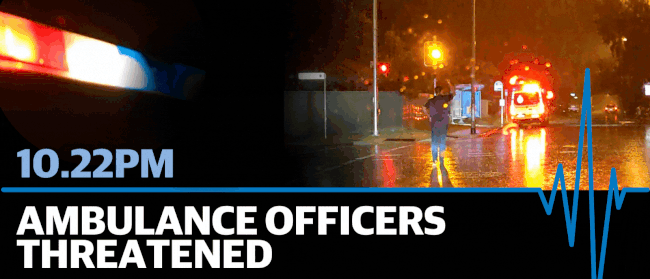
Rain is thundering down, sucking and swirling across Sunshine Boulevard, not far from Pacific Fair.
Despite the conditions, a lone man, barefoot, is walking unsteadily down the middle of the street.
He raises his arm, flipping the bird at an ambulance about 20 metres ahead, crawling slowly along to maintain its distance.
Minutes earlier, the ambulance staff had stopped to help the man, who appears badly drug affected. But they were met with threats and abuse.
“He was running around the ambulance, roaring, grinding his teeth,” one says.
The ambulance officers have called for back-up. But despite the threat to their own safety, they haven’t left the scene. They never do.
“They’re doing exactly what they’re supposed to do,” says Stuart. “We don’t leave someone, they still need help.”
So the ambulance officers keep watch on the man, from a safe distance, until help arrives in the form of Stuart and another experienced officer.
They hop out of their car and run up to the man. “Oi, mate, over here. We’re here to help you.”
He instantly calms down and after a couple of minutes is bundled into the ambulance.
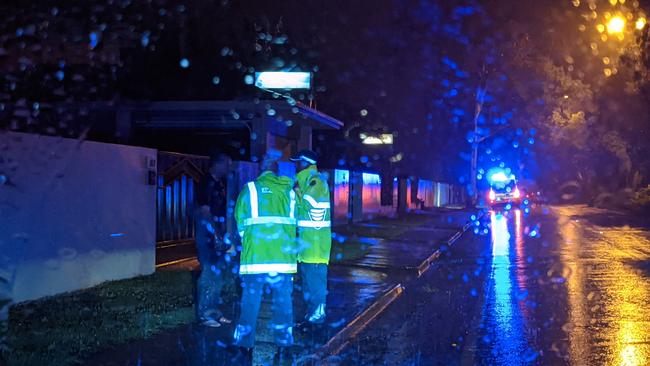
By now police have arrived and they follow on the short journey to Robina Hospital. There are multiple red flags – including a warrant out for his arrest.
I marvel at how the ambulance officers were able to diffuse what seemed a highly volatile and dangerous situation.
Was it experience? More than I suspected.
In a quiet moment later one confides that a family member had suffered the agonies of ice addiction.
“They were tough years,” the officer says. “But they’re clean now. We got through it.”
Ambulance officers carry all kinds of remarkable modern equipment. But empathy remains a valuable tool.
* * * * * * * * * * * * * * * * * * *
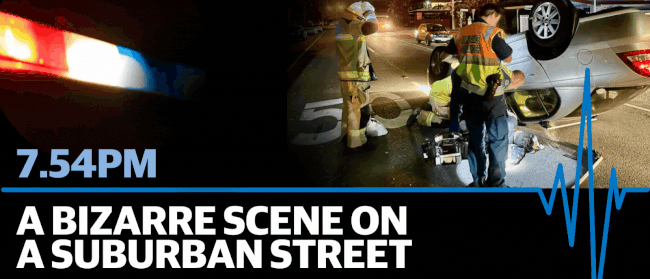
Ricky Arnold is a busy man. Ricky is a critical care paramedic based in Burleigh Heads. He attends serious incidents throughout the Gold Coast. If you’re ever unfortunate enough to be involved in a serious traffic accident, there’s a fair chance you’ll meet Ricky.
And you’ll thank your lucky stars that you do.
Tonight Ricky is dealing with a confronting scene. A car lies upside down in the middle of a residential street, Tahiti Ave, in Palm Beach. The driver, a 48-year-old man, lies motionless on the ground beside it.
There’s a smell of petrol.
But Ricky’s in no hurry to move him. Paramedics like Ricky won’t wait until you get to hospital. They have the skills and the equipment to treat you at the scene.
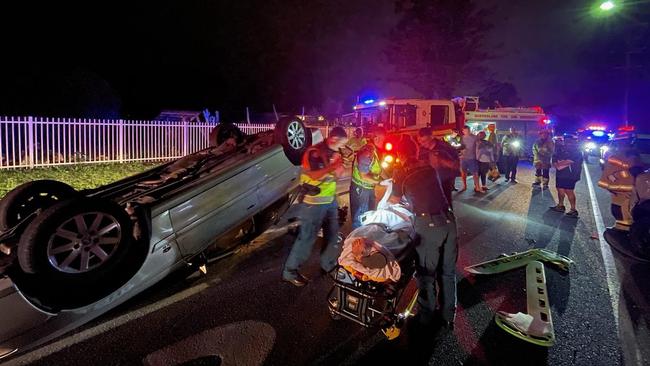
By the time police, firies and back-up ambulance staff arrive, Ricky has already assessed the driver and knows he’s not seriously injured.
“He was quite aggressive before,” Ricky says. “But he’s OK now. He’s got quite a few cuts but that’s about it. He’s been lucky.”
Firies pour “kitty litter” over the spilt petrol before paramedics put a soft collar around the man’s neck, carefully move him on to a spinal board and load him into the ambulance.
By now a large crowd has gathered. Among them are towies. They try to get the man to sign paperwork as he lies in the back of the ambulance before backing off.
“Forget it mate,” one shouts out to the towie holding the clipboard. “Cops are seizing it.”
This alarms the patient. “What are they doing with my car?”, he exclaims.
It’s a moot point. The man had crashed into two parked vehicles, causing his own to roll. It won’t be driven again.
Among the crowd, the owner of the two parked cars that were hit. One was her’s, the other her husband’s. Double bad luck.
But not for their daughter. A Year 12 student, she watches enthralled.
“I’m hoping to be a paramedic,” she says. “This is awesome.”
* * * * * * * * * * * * * * * * * * *
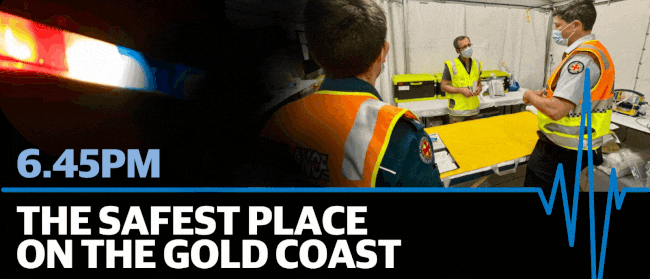
The young woman in Palm Beach was at home because she skipped the last night of Schoolies.
Turns out Schoolies was the safer place to be.
It’s not by accident. As dusk falls over Surfers Paradise, a remarkable operation involving QAS, Queensland Health, the SAS and Red Frogs is swinging into gear.
With the sound of rippling waves as a backdrop, an emergency treatment centre has been set up in tents by the foreshore. It’s like a mini hospital, with a reception and well-equipped procedure areas, where patients can be assessed and treated in privacy.
There’s also a “sleep-off room”, with canvas beds and sick bags at the ready.
“We monitor them there, usually for about an hour,” QAS commanding officer at Schoolies Justin Payne explains. “If they’re OK then we let them go into the care of a friend or the Red Frogs, who can get them back to wherever it is they’re staying.”

It’s not just schoolies that benefit. Having help close at hand means that most don’t need to go to hospitals, don’t need to travel in ambulances – leaving those assets free for the usual steady stream of calls for help.
“It keeps them out of EDs,” Justin says.
Among his team of 20 paramedics are officers on foot and on bike, able to respond with remarkable speed.
The Bicycle Response Team, active from Southport to Mermaid Beach, has become a fixture of tourist areas since first trialled in 2017. On average they get to jobs eight minutes quicker than an ambulance.
Recent jobs included the case of 14-year-old Ava Azzopardi, who went into cardiac arrest during a soccer match at Lex Bell Park in Surfers Paradise in September.
Ambulance officers were there just over two minutes after being called.
“When we started we got some strange looks,” officer Shane McEvoy says.
“But we get good outcomes. We’re there in minutes for things like immersions, cardiac arrests.
“It’s the best job in the ambulance service.”
* * * * * * * * * * * * * * * * * * *

Kate Wake sits at her desk. In front of her is a bank of six screens.
I joke it’s like the array that faces an air traffic controller.
Kate is operations centre supervisor at Southport Ambulance Station. Her team handles calls and dispatch help not just across the Gold Coast, but also south Brisbane and far to the west of the city.
Information is everything, and those six screens hold a dizzying array. It’s shared instantly with other emergency services such as police and firefighters, one of the reasons help arrives so quickly when it’s needed most.
Her job is always busy. But Kate wants you to call.
“Elderly people often think they could be a bother, they don’t want to be a nuisance,” she says.
“But the quicker we get to you the better.
“Always call an ambulance if you don’t know what to do.”
I ask about the small minority of callers who become abusive.
“Every call, we give them respect,” she says.
“The caller can be stressed. We let them know we’re coming.”
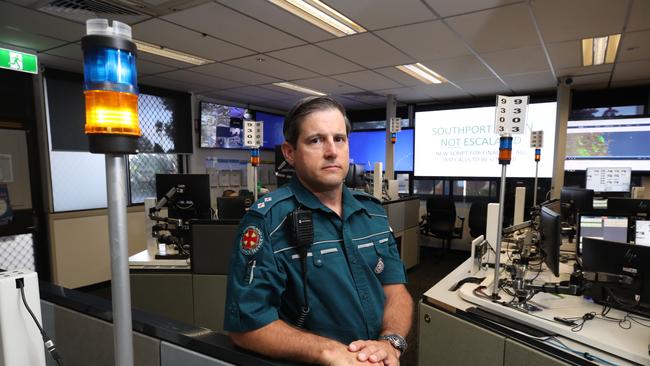
From the moment phones are answered, jobs are logged almost instantly. The system shows it, recording every keystroke. Within seconds, help is on the way.
“Everything is taking place while we’re taking details,” Kate says.
In the ambulances, one crew member drives, while the other reads details of the job on a console that displays them as they’re typed.
Air traffic control has nothing on it.
* * * * * * * * * * * * * * * * * * *
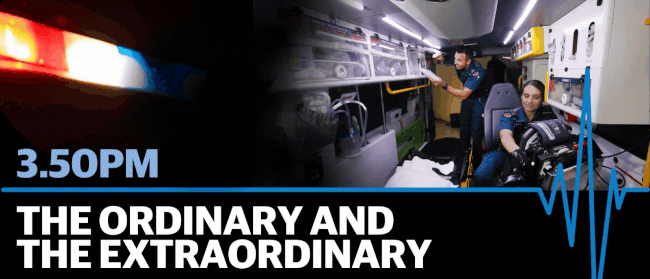
It’s almost four o’clock. Rain is sheeting down as I drive down Southport Nerang Road towards Southport Ambulance Station.
In the car park, operations supervisor Stuart Cutajar is clearing boxes from his vehicle. Making room for the scribbler from the Bulletin.
What can I expect to encounter that evening?
“Every night is different,” says Stuart.
But it’s always busy.
“On the Gold Coast, the average is 341 Code 1 and Code 2 calls per day.”
There will be heart attacks, suicide attempts, car accidents, assaults.
All attended to by QAS paramedics within minutes.
A normal sort of day.
Extraordinary.

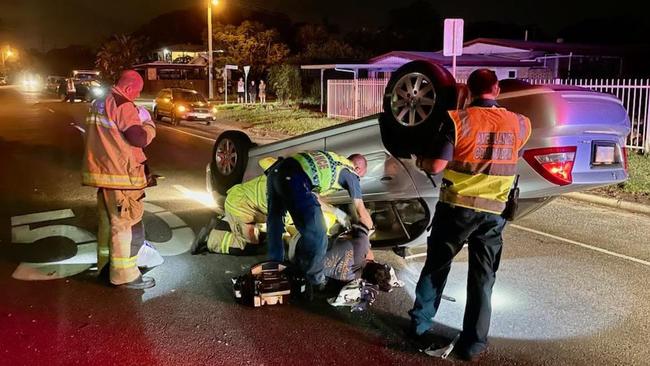
Add your comment to this story
To join the conversation, please log in. Don't have an account? Register
Join the conversation, you are commenting as Logout
Woman was ‘judo thrown’ in school car park, son tells court
An ex-ADF member allegedly involved in a scuffle with a grandmother in a Gold Coast school carpark will face the District Court over the charge. Read what happened at his committal here.
‘You’ve stabbed me’: Wine bar melee after verbal stoush claims
Two men injured when the director of an insurance brokerage allegedly stabbed a member of their party at a ritzy wine bar at Sanctuary Cove have given evidence to a court.